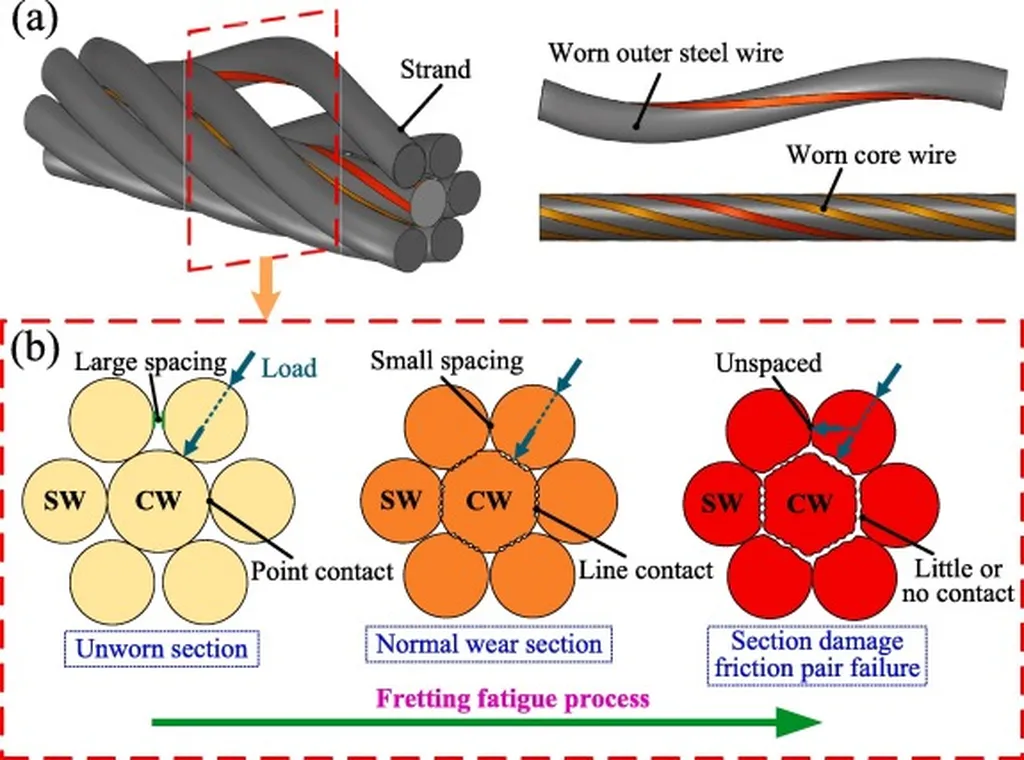In the world of industrial infrastructure, where bridges span vast distances and power lines stretch across landscapes, a silent menace lurks in the form of fretting damage. This phenomenon, which occurs in flexible multi-strand wire structures, can lead to significant economic losses and safety concerns, particularly in the energy sector. Recent research, led by LU Haowen and published in the journal *Jixie qiangdu* (which translates to *Mechanical Strength*), sheds light on this critical issue, offering insights that could revolutionize how we protect and maintain these vital structures.
Flexible multi-strand wire structures are the backbone of many industrial applications, from bridges and buildings to coal mines and power transmission. Their flexibility, reliability, and strength make them indispensable. However, their service environment is far from benign. These structures are subjected to a complex mix of loads, including tension, torsion, bending, and multi-axis combined loads. Environmental factors like wind, rain, snow, and electrical currents further exacerbate the situation, leading to fretting damage between the strands and wire clamps.
Fretting damage manifests as an increased probability of broken wires and strands, resulting in reduced conductivity, increased losses, and a shortened fatigue life. In severe cases, it can even cause rapid fracture failure. “The consequences of fretting damage are far-reaching,” explains LU Haowen. “It’s not just about the immediate failure of a component; it’s about the cascading effects on the entire system, leading to significant economic and safety implications.”
The research outlines the current state of understanding about fretting damage, detailing its forms, contact analysis, influencing factors, and testing apparatuses. It also delves into prediction and protection methods, providing a comprehensive overview of the field. “Our goal is to arm engineers and researchers with the knowledge they need to mitigate fretting damage effectively,” says LU Haowen.
The commercial impacts of this research are substantial, particularly for the energy sector. Power transmission lines, which rely heavily on flexible multi-strand wire structures, are critical infrastructure. Any damage to these lines can lead to power outages, economic losses, and even safety hazards. By understanding and mitigating fretting damage, energy companies can ensure the reliability and longevity of their transmission lines, ultimately leading to a more stable and efficient energy grid.
Moreover, the research opens up new avenues for future developments. As LU Haowen notes, “This is just the beginning. There’s still much to explore in terms of advanced materials, innovative designs, and smart monitoring systems that can further enhance the performance and durability of these structures.”
In conclusion, the research published in *Jixie qiangdu* is a significant step forward in the fight against fretting damage. It provides valuable insights and tools for engineers and researchers, paving the way for more robust and reliable industrial infrastructure. As the energy sector continues to evolve, this research will play a crucial role in ensuring the safety and efficiency of our power transmission systems.

